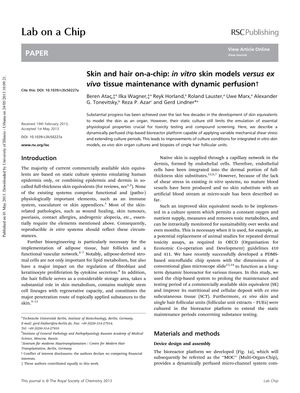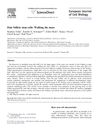Skin and hair on-a-chip: in vitro skin models versus ex vivo tissue maintenance with dynamic perfusion
January 2013
in “Lab on a Chip”

TLDR The Multi-Organ-Chip improves the growth and quality of skin and hair in the lab, potentially replacing animal testing.
In 2013, researchers introduced a dynamic perfusion system called the Multi-Organ-Chip (MOC) to improve the culture of skin and hair follicle tissues in vitro. The MOC system was found to enhance the viability and structural integrity of skin equivalents and hair follicles compared to static cultures. It allowed for prolonged culture periods, maintained key tissue markers, reduced cell death, and supported hair shaft elongation, indicating a delay in the regression phase of hair growth. This platform could potentially replace animal studies for dermal toxicity assays and improve the testing of substances on skin models. The study was funded by the German Federal Ministry of Education and Research and the Russian Ministry for Science.
View this study on pubs.rsc.org →
Cited in this study

research Adipocyte Lineage Cells Contribute to the Skin Stem Cell Niche to Drive Hair Cycling
Fat-related cells are important for initiating hair growth.
research De novo formation and ultra-structural characterization of a fiber-producing human hair follicle equivalent in vitro
Scientists recreated human hair follicles in the lab that can grow hair.
research Follicular transport route – Research progress and future perspectives

research Hair follicle stem cells: Walking the maze
Hair follicle stem cells are key for hair and skin regeneration, can be reprogrammed, and have potential therapeutic uses, but also carry a risk of cancer.
Related

research Skin and hair on-a-chip: in vitro skin models versus ex vivo tissue maintenance with dynamic perfusion
The Multi-Organ-Chip improves the growth and quality of skin and hair in the lab, potentially replacing animal testing.